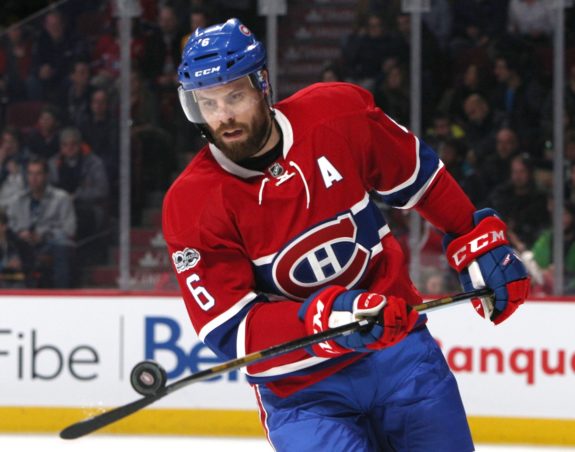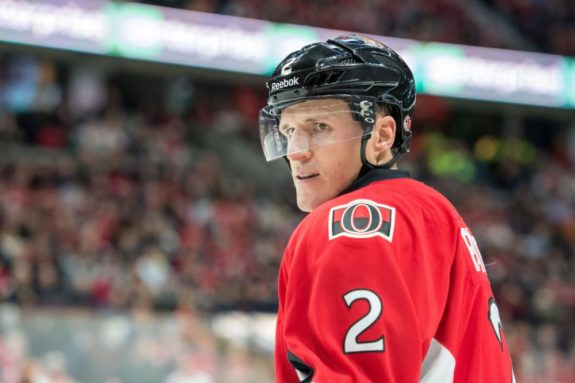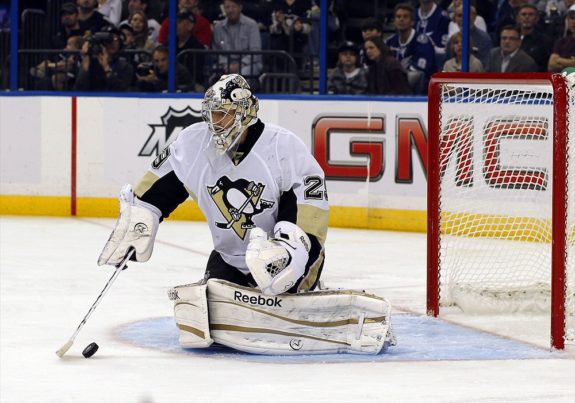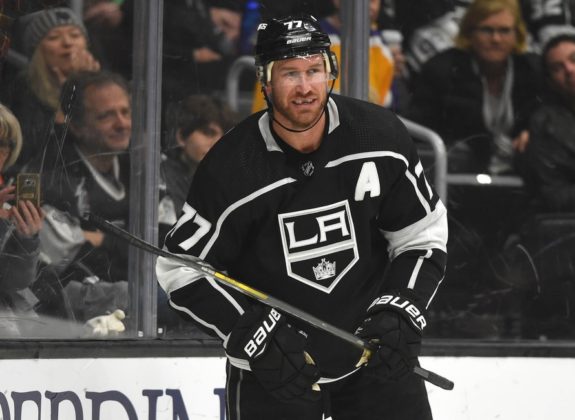When it comes to the annual NHL Entry Draft, few draft years are held in such high esteem as the 2003 NHL draft class.
Considered one of the best drafts in NHL history, many of the players that were drafted that year can also easily be found in a “who’s who” list of the NHL’s top superstars today: Eric Staal, Ryan Getzlaf, Corey Perry, Ryan Suter, Thomas Vanek, Shea Weber, Zach Parise, Dion Phaneuf, Marc-Andre Fleury and numerous others. The full list of picks is nothing short of staggering.
While many of those players were dominant sensations for their junior clubs heading into the draft, the transition from being a highly-touted prospect to becoming an NHL star is neither easy nor quick. Oftentimes the developmental process requires a lot of strategy and planning on behalf of the teams, and it can go horribly wrong if they aren’t careful. Look back throughout the last 30 years of the league and you’ll find many players that were brimming with potential, but got rushed into the NHL before they were ready or placed into a less-than-ideal team situation, and then never recovered to become as good of a player as they were projected to be.

Mikhail Grigorenko of the Buffalo Sabres is a good recent example. One of the best players from the 2012 draft, the Sabres have badly mishandled the last two years of his career, and now there are legitimate concerns that his long-term development might never fully recover. And all it takes is one look at the habitually dreadful Edmonton Oilers, despite their embarrassingly rich wealth of junior phenoms, to make you wonder how much damage gets caused when you bring players into a difficult situation before they are fully ready.
Which takes us back to the 2003 NHL draft class.
Even with all their natural talent, one of the most important factors that helped many of them get to the point where they are today might have been one of the NHL’s biggest black eyes, a disaster that shook the very foundation of the sport: the 2005 lockout. Let’s take a look at how this happened.
2003 NHL Draft Class Making the Jump to the Pros
Like most draft years, the majority of the 2003 class was drafted out of the three junior leagues that the Canadian Hockey League is composed of: the Ontario Hockey League, the Quebec Major Junior Hockey League, and the Western Hockey League. The CHL, the NHL, and the two other North American professional minor leagues, the American Hockey League and East Coast Hockey League, have an agreement when it comes to player development and advancement: players must be at least 20 years of age (by December 31 of that year) to be AHL or ECHL eligible. This agreement is in place to protect the CHL from losing many of it’s top players directly to the AHL.

However, that same agreement does not exist between the CHL and the NHL. So long as a player is 18 years of age he can be brought into the NHL by the team that retains his rights. Many 18 and 19-year old players throughout NHL history have made the jump from the CHL to the NHL, bypassing the AHL altogether and, in some cases, foregoing their final years of junior eligibility.
While many young players have successfully made that jump over the years, there are countless others, such as Grigorenko, that have struggled to do so. There is a growing movement of voices in hockey circles that are making the argument that prolonged junior and minor pro seasoning, as opposed to immediate NHL advancement, is the best course of action when it comes to player development. Proponents of this idea point to the Detroit Red Wings, with their consistent yearly success (22 consecutive playoff appearances) and slow-and-steady approach to their prospects, as the shining example of how effective this method can be.

What makes the 2003 draft class so interesting, when following this train of thought, is that all of those players were unable to take the short route to the NHL, simply because there were no NHL games for them to participate in.
Which 2003 NHL Draft Players Benefited From the Lockout?
Did that extra year of development, the 2004-2005 season, help to make those players the stars that they are today? Looking at a few individual cases makes the question all the more interesting.
Marc-Andre Fleury, drafted 1st overall by the Pens in the 2003 NHL draft, actually played in the NHL prior to the lockout, appearing in 22 games for the Pens in 2003-2004 where he posted a record of 4-14-2 with a 3.64 G.A.A. and a .896 save percentage.

However, the Pens were a defensively abysmal team during that time, making life terrible for any goalie that dressed for them. Because he was a late birthday in his draft year, Fleury spent the 2004-05 lockout season in the AHL as the number one goalie for the Wilkes-Barre/Scranton Penguins, gaining confidence and experience that helped him take the reigns as the go-to goalie in Pittsburgh after the lockout. Would Fleury, who backstopped the Pens to a 2009 Stanley Cup Championship, have been the same goalie if he would have been shellacked nightly in the NHL as a 20 year-old?
Eric Staal, drafted right after Fleury at second overall by the Carolina Hurricanes, also played in the NHL prior to the lockout, putting up a respectable 31 points in 81 games for the Canes. Another late birthday, he also played in the AHL in 2004-05, scoring a then-franchise record 77 points in 77 games for the Lowell Lock Monsters.

How did Staal follow that up at the NHL level after the lockout? He posted 100 points and helped Carolina win the 2006 Stanley Cup, the first in franchise history, including the days when they were the Hartford Whalers.
More 2003 NHL Draft Players Who Benefitted
Corey Perry, drafted 28th overall by the Anaheim Ducks, used his 2004-2005 season to put up one of the best performance years in OHL history. Perry scored 130 points in 60 regular season games, as well finishing with a +66 rating, before adding 38 more points in 18 playoff games as he led the London Knights to a Memorial Cup Championship. His efforts that season won him the honours of OHL MVP, which he eventually followed up by winning the Hart Trophy as NHL MVP in 2010-2011.

Jeff Carter and Mike Richards, drafted 11th and 24th, respectively, by the Philadelphia Flyers, were leaders on their OHL teams that year, and were called up to the AHL’s Philadelphia Phantoms for the playoffs after their junior seasons expired. The two players excelled that postseason, helping the Phantoms win the 2005 AHL championship, the Calder Cup.

The list goes on and on. Many players that probably could have played in the NHL that season tore up the junior leagues and made names for themselves in the AHL.
2003 NHL Draft Class and the World Juniors
On the international level, 2005 also saw one of the most compelling iterations of the World Junior Championship. With no players kept out of the tournament due to NHL responsibilities, the competing nations iced some of their most stacked rosters in tournament history. None moreso than Team Canada, which consisted of Perry, Carter, Richards, Weber, Phaneuf and others. The Canadians outscored their opponents 32-5 during the preliminary round, and defeated Russia by a score of 6-1 in the final game to win Gold. It was never even close.
Like any thought exercise involving history, it’s always impossible to say for sure what would have happened if things had gone different. Even if there was an NHL season in 2004-2005, the same top prospects might have gone on to the same star careers. But as far as development is concerned, confidence builds momentum, and you can’t help but be in awe of how much confidence was amassed by the 2003 draft class during that historic lockout season.
This article was originally published in November, 2013.
Best draft ever. And it’s not even close…